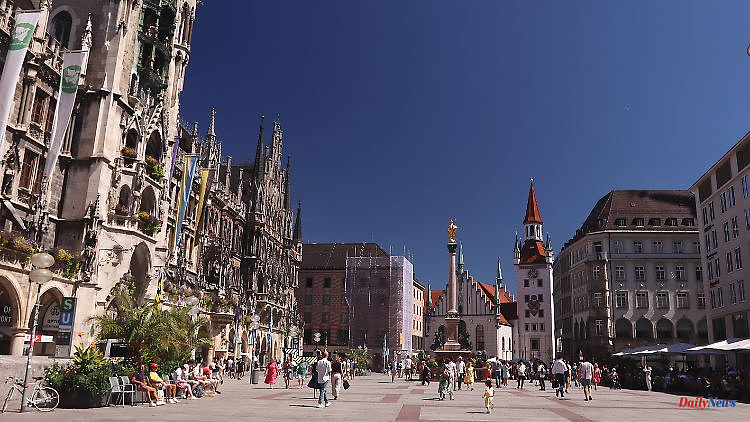Extreme heat is not only unhealthy, it is even life-threatening. Cities heat up particularly in summer and become veritable "heat islands". A study is now calculating to what extent a higher density of trees would have a cooling effect there - and thereby save lives.
More trees in cities could significantly reduce the number of heat deaths in summer. This is what an international research team reports after analyzing 93 major European cities, including seven major German cities. If the treetop coverage in the cities were doubled from the current average of just under 15 percent to 30 percent, the temperature there in summer would drop by an average of 0.4 degrees. This could reduce the number of heat-related premature deaths by almost 40 percent, according to the study presented in The Lancet.
The residents of cities in southern and eastern Europe, where it is particularly hot in summer, would particularly benefit. In a "Lancet" comment, two experts call for such measures to cool cities to be implemented immediately, especially with a view to global warming.
Extreme heat impairs health and increases mortality, writes the team led by Tamara Iungman from the Institute for Global Health in Barcelona, referring in particular to cardiovascular diseases. Older people and children are particularly at risk. Cities are considered "urban heat islands" because they heat up more in summer and cool down more slowly than surrounding rural areas.
Since the heat stress will increase due to global warming, experts have been advising for years to take countermeasures in urban planning, among other things by expanding the treetop cover to 30 percent of the residential areas of a city. Trees provide shade and moisture.
In order to assess the consequences of this measure, the team evaluated data from 93 European cities, including Berlin, Hamburg, Munich, Cologne, Düsseldorf, Frankfurt and Leipzig. For each city, the team analyzed temperatures and death dates from June to August 2015, and calculated the cooling effect of increased tree cover and the impact on mortality.
According to this, the cities analyzed were on average 1.5 degrees warmer than their surroundings in the summer of 2015 - with the difference being significantly greater during the day than at night. The heat island effect was strongest in Cluj-Napoca, the second largest city in Romania: It was 4.1 degrees warmer here than in the rural area.
For the summer of 2015, the team attributed around 6,700 premature deaths - in a total population of 58 million people aged 20 and over - to the heat island effect. 2,644 of them - 39.5 percent - could have been avoided if trees on 30 percent of the area would soften the summer climate. This is also an average value: the researchers found hardly any effect for northern regions such as Sweden, the Baltic States or northern England. In contrast, the effect was all the more pronounced in the cities of Southern and Eastern Europe, where it is significantly hotter in summer and which tend to be more densely built-up.
For German cities, the team found a moderate impact. The heat island effect for Hamburg - where treetop coverage is currently just under 24 percent - is a good 0.8 degrees, in Munich - treetop coverage at a good 20 percent - it was a good 1.2 degrees. This is also where the avoidable mortality rate of 1.6 deaths per 100,000 inhabitants was highest for the German cities considered.
"Our results suggest that hotter temperatures in cities have a significant impact on mortality, and that this impact can be reduced by expanding tree cover to cool urban environments," study leader Mark Nieuwenhuijsen said in a statement to The Lancet quoted. It is not just about the absolute tree area in a city, but about a fair distribution across all residential areas. "We encourage urban planners and policy makers to implement green infrastructure adapted to the local environment and combine it with other measures to maximize health benefits."
These include the use of other surface materials - such as granite instead of asphalt -, a lower building density and the greening of roofs and facades. "Such changes are needed to improve the livability of urban areas and address the growing challenge of climate change and biodiversity loss," write Kristie Ebi of the University of Washington and Kathryn Bowen of the University of Melbourne in the Lancet "-Comment.
The study does contain weaknesses, the experts write, but the results are valid enough to be implemented immediately in urban planning. In addition, such analyzes are also urgently needed for the large metropolitan areas in China and India or in Africa.












